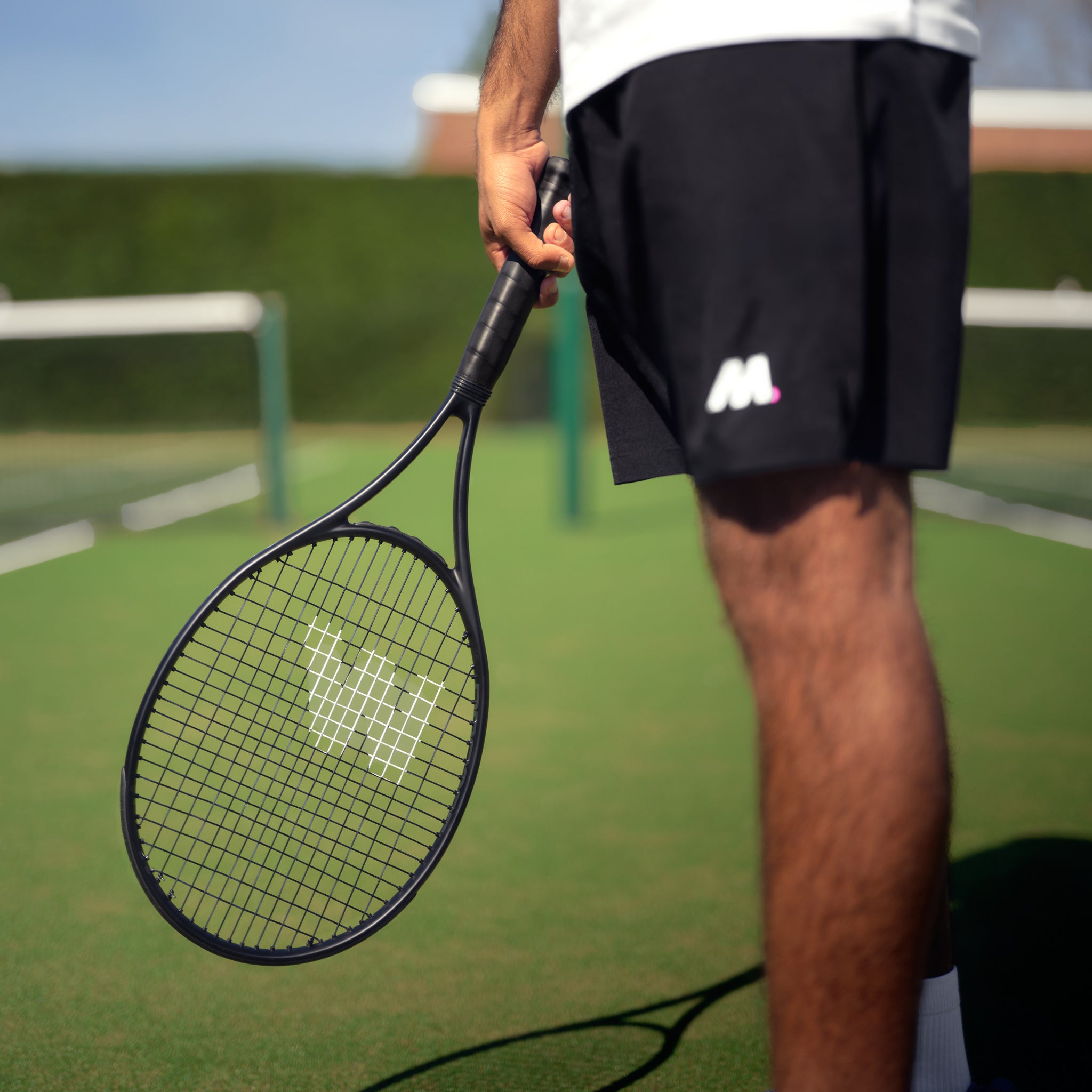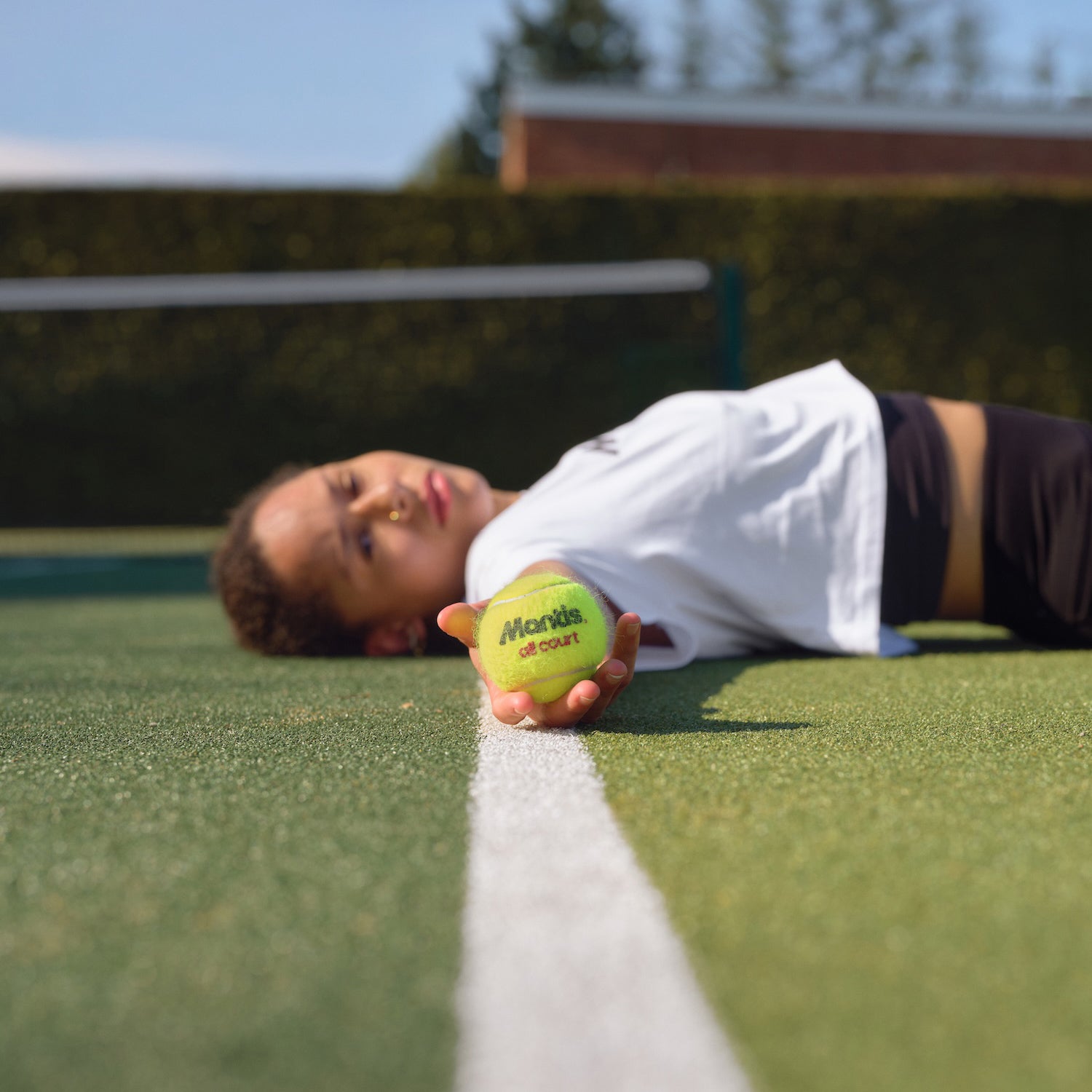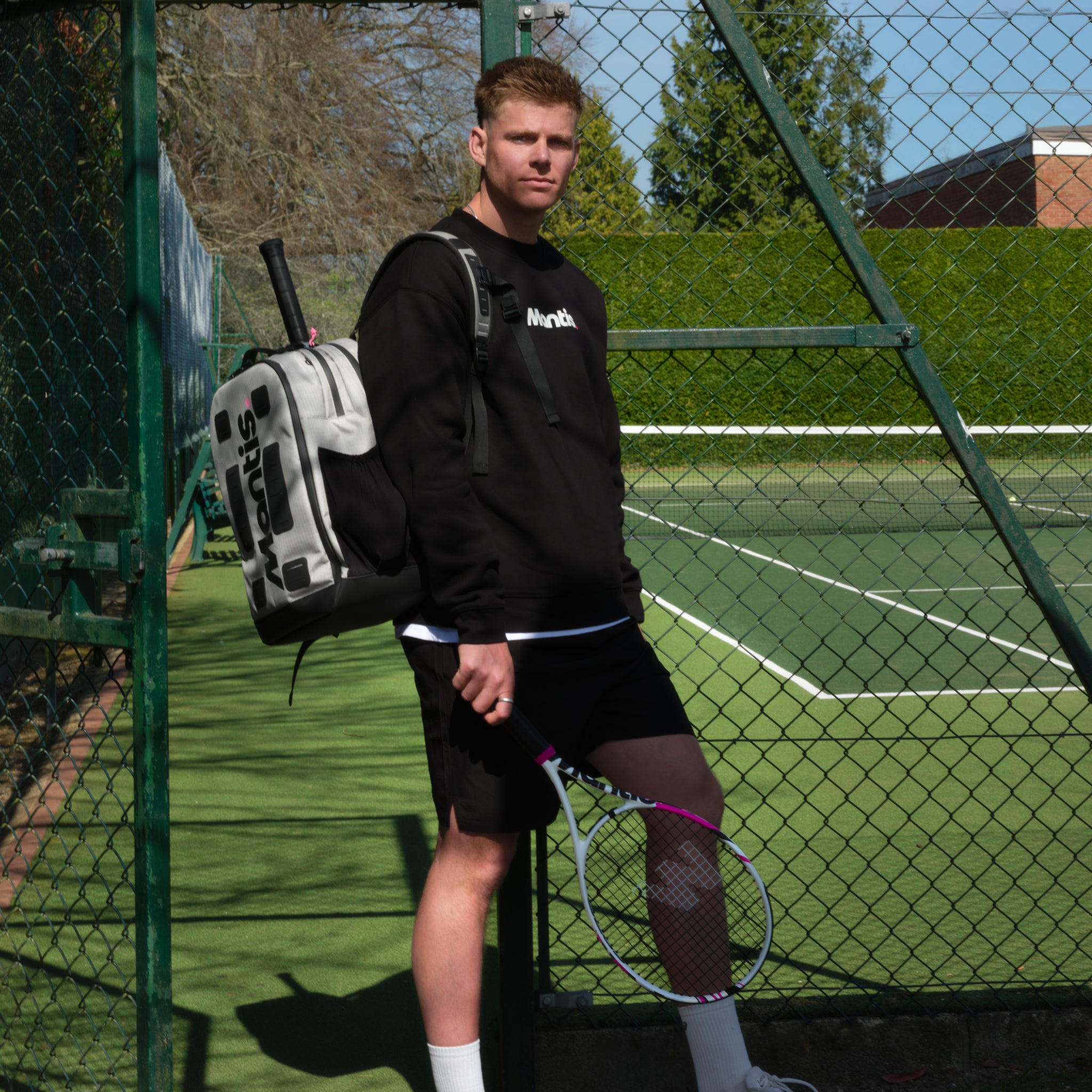
When looking for the most effective way to maximise your sports injuries prevention, smart preparation is everything. At Mantis, we believe that understanding the fundamentals, like proper tennis warm up exercises, is key. Most problems, from those niggling aches to a major setback that puts you on the sidelines, can be traced back to preventable causes like muscle imbalances, overuse, or just poor conditioning. Here at Mantis, we’ve seen first-hand how a proactive approach can completely change an athlete's career and their love for the game.
Building Your Foundation for |Sports Injuries Prevention
Staying on the court, pitch, or track has little to do with luck. It's a direct result of consistent, systematic preparation. The great news is that the core principles the pros use can be adapted for any level of play, drastically cutting your risk of getting benched. The first step towards building a truly resilient body is understanding why injuries happen in the first place.
Make no mistake, injuries are a huge challenge even for the world's best. A study looking at UK Olympic athletes found that a staggering 43% suffered at least one injury per season, forcing them to miss an average of 17 training days. The most common trouble spots? The knee, shoulder, hip, and lower back. This really drives home just how vital a foundational approach to strength and stability is.
Key Pillars of a Proactive Approach
To build that solid foundation, we need to focus on a few key areas that work together to shield your body from the stress of training and competition.
- Know Your Weak Points: Realising that areas like the knees, shoulders, and lower back are common hotspots lets you target them with specific strengthening work before they become a problem.
- Correct Imbalances: So many injuries happen because one muscle group is doing all the work while its opposite is weak. A well-rounded conditioning programme helps your body move efficiently and safely, sharing the load properly.
- Manage Your Workload: Overtraining is one of the fastest routes to injury. Smart scheduling that builds in proper rest and recovery isn’t optional—it’s essential for staying in the game long-term.
At Mantis, we see the body as a connected system. A weakness in your core can easily show up as shoulder pain, just as poor hip mobility can lead to knee issues. Injury prevention is about strengthening the entire chain, not just the individual links.
It’s all about applying these principles to your specific sport. For instance, you can find brilliant expert tips for injury prevention for runners that blend warm-ups, drills, and recovery. This guide will give you that same practical detail for various sports, but with a special focus on the unique demands of tennis.
The Power of a Dynamic Warm-Up Routine
A proper warm-up does so much more than just get your head in the game. It’s about physically priming your muscles, waking up your nervous system, and getting your joints ready for the demands of a tough match. We’re big believers in dynamic warm-ups over the old-school static stretching you might have learned years ago, and our guide to effective tennis warm up exercises breaks down exactly why. This active approach gets your blood flowing and raises your core temperature, which is one of the best things you can do to avoid nasty strains and tears.
Forget grabbing your ankle and holding a quad stretch for 30 seconds before stepping onto the court. Instead, you should be thinking in terms of movement that mimics what you’re about to do. For tennis players, that means things like leg swings, torso twists, and walking lunges. These actions fire up the exact muscle groups you rely on for a powerful serve or an explosive sprint to the net. Getting this part right is a cornerstone of injury prevention.
When you maintain great posture with an engaged core throughout your warm-up, you're essentially teaching the right muscles to fire before the real action even begins.
Building Your 10-Minute Pre-Match Sequence
Consistency is everything. Your goal here is to gently elevate your heart rate and activate the specific muscles your sport demands. The good news? This doesn’t need to be a long, drawn-out affair.
- Light Cardio (3-5 mins): Start with something simple to get the blood pumping. A bit of light jogging, skipping, or even a few minutes on a stationary bike will do the trick.
- Dynamic Stretches (5-7 mins): Now, focus on controlled movements that take your joints through their full range of motion. Think big arm circles, leg swings (forwards, backwards, and side-to-side), and torso rotations.
- Sport-Specific Drills: Finish off with some low-intensity versions of what you’re about to do. For tennis, this could be some easy shadow swings or mini-tennis rallies inside the service box.
It's helpful to understand the fundamental difference between the active movements you should do before playing versus the deep holds you might do after.
Dynamic vs Static Movement Breakdown
| Movement Type | Description | Best Used For |
|---|---|---|
| Dynamic | Active, controlled movements through a full range of motion. Think leg swings, arm circles, torso twists. | Pre-activity warm-up. It increases blood flow, activates muscles, and improves mobility without losing power. |
| Static | Holding a stretch in a fixed position for an extended period (e.g., 20-45 seconds). Think classic hamstring or quad stretches. | Post-activity cool-down. Helps to improve long-term flexibility and release muscle tension when the body is already warm. |
In short, think dynamic for "go" and static for "slow." Using static stretches before a match can actually decrease your power output temporarily – the last thing you want before serving.
By dedicating just 10 minutes to a solid dynamic warm-up, you're not just getting ready to play—you're making a direct investment in your long-term athletic health. It drastically reduces the chances of being sidelined by a preventable injury. For any serious athlete, this should be non-negotiable.
Building Resilience with Strength and Conditioning
It's a simple truth in sport: a stronger athlete is a safer athlete. If you want to build a body that can handle the sheer force of competition, a smart strength and conditioning plan is non-negotiable. But to really get to the heart of preventing sports injuries, we need to look past the obvious "power" muscles like your quads or biceps.
Here at Mantis, we've always championed the smaller, deeper stabiliser muscles. Think of them as your body's internal scaffolding; they're what protect your joints from taking a beating. For a closer look, we've put together some detailed plans in our guide to effective tennis strength training.
This means shifting your focus to exercises that seriously challenge your balance and control. A tennis player, for instance, needs rock-solid knee stability to make those lightning-fast changes in direction. Adding single-leg squats to their routine is a direct way to fortify the muscles around the knee joint, building a much more resilient structure.
In the same way, plank variations are absolutely brilliant for forging a strong core. This is what protects your spine during those explosive rotations, whether you're unleashing a serve or ripping a forehand.
Smart Training with Periodisation
Going hard in the gym all the time isn't the answer, though. That's a fast track to burnout and, ironically, injury. This is where a concept called periodisation comes into play. It's essentially the organised planning of your training across a season, deliberately cycling through different phases of intensity and volume.
This structured approach makes sure you peak when it matters most, while also building in essential time for recovery and adaptation. It's one of the best strategies we know for avoiding the overtraining that so often sidelines players.
By structuring your training, you manage fatigue, promote recovery, and ensure your body is always adapting positively. It’s the difference between blindly pushing your limits and intelligently building your capacity to perform—a cornerstone of long-term athletic health.
Think about it this way: you wouldn't sprint a marathon from the starting gun. You pace yourself. Periodisation applies that exact same logic to your entire season, helping you stay strong, healthy, and ready for whatever comes your way.
The Overlooked Protectors: Your Technique and Gear
It's easy to focus on stretching and strength work, but two of the most common culprits behind nagging injuries are often overlooked: poor technique and the wrong gear. We spend a lot of time at Mantis exploring this connection, which is why our guides on topics like effective tennis strength training always come back to building a resilient foundation. Honestly, mastering the fundamentals is your best first line of defence.
Think about the mechanics of a tennis serve. If your form is off, you're putting massive, repetitive stress on your rotator cuff. That's a recipe for chronic shoulder pain and a loss of power. The same goes for a weak backhand, which often leads players to overcompensate with their wrist and elbow – a classic cause of tennis elbow. The best way to sort this out is with a coach, but a great starting point is to simply film yourself. You'd be amazed what you can spot when you watch your own strokes in slow motion.
This isn't just anecdotal, either. Research into UK sports injuries consistently shows that so many issues could have been avoided with simple interventions, like using the right protective gear or getting a bit of education on safe practices. It just goes to show how a few smart adjustments can slash your injury risk.
Getting Your Equipment Right
Think of your gear as an extension of your body. When it doesn't fit or function correctly, it can quietly sabotage all your hard work on the court. The right equipment isn’t just about boosting performance; it's a crucial layer of protection.
Here's what to focus on:
- Supportive Footwear: Your shoes are your first point of contact with the ground. They need to absorb shock and provide stability for all those quick lateral movements, taking the pressure off your ankles, knees, and even your hips.
- A Racket That Fits: Playing with a racket that has the wrong grip size or is too heavy for you forces your arm to work much harder than it needs to. This leads to fatigue and strain, plain and simple.
- Protective Gear: Don't neglect the basics. Depending on your sport, things like mouthguards, shin pads, or a good quality brace can be the difference between a minor knock and a serious injury.
Choosing the right equipment isn't about buying the most expensive kit on the shelf; it's about finding what fits your body and your game. An ill-fitting racket or worn-out shoes can create subtle imbalances that, over time, lead directly to injury, undoing all the effort you've put in.
Getting Smart About Recovery and Listening to Your Body
What you do after walking off the court is every bit as important as the training itself. Recovery isn't just about putting your feet up; it's an active process. This is when your body gets to work repairing microscopic muscle damage, refilling its energy tanks, and adapting to get stronger for next time.
We know it's tempting to jump straight back into another session, especially when you're feeling good. But trust us, neglecting this phase is one of the fastest routes to injury. Instead of just stopping cold, it's about using smarter recovery strategies. It all starts with the simple but crucial act of listening to what your body is telling you.
True recovery is a mix of smart tactics that work together to speed up the repair process. One of the most effective methods we've seen with players is active recovery. This just means doing some low-intensity exercise after a tough match or drill. Think a light jog, a gentle cycle on a stationary bike, or even just a brisk walk.
This simple step keeps the blood flowing, which helps clear out metabolic waste products (like lactic acid) from your muscles. The result? Less soreness and a quicker healing process.
Fueling the Repair Process
You can't out-train a poor diet, and you definitely can't recover properly without the right fuel. Think of nutrition and hydration as the actual building blocks for muscle repair.
- Protein for Repair: Try to get a good source of protein within an hour or two after you finish playing. This gives your body the essential amino acids it needs to start rebuilding those damaged muscle fibres.
- Carbohydrates for Refueling: Your muscles run on stored energy called glycogen, and a tough match will drain those stores. Topping them up with healthy carbohydrates is vital if you want to be ready for your next performance.
- Hydration is Key: Water is involved in almost everything your body does, including getting nutrients where they need to go and flushing out waste. Being dehydrated can seriously slow down recovery and makes you more susceptible to cramps and strains.
Your body is incredibly good at sending you signals, but you have to learn how to read them. Figuring out the difference between delayed onset muscle soreness (DOMS)—that familiar, satisfying ache after a hard workout—and the sharp, persistent pain of a potential injury is a skill every athlete needs. Pushing through the first can be beneficial; pushing through the second is just asking for trouble.
Ultimately, your most powerful recovery tool might just be sleep. During deep sleep, your body releases growth hormone, which is absolutely critical for repairing tissue. Getting a solid 7-9 hours of quality sleep per night is non-negotiable if you want to stay healthy and perform at your best. That’s when the real magic of adaptation happens.
Answering Your Top Questions on Injury Prevention
Even the most seasoned athletes have questions about staying injury-free. It's a constant learning process. Here at Mantis, we get asked a lot about the practical side of injury prevention, so let's clear up some of the most common queries we hear from players.
It’s no secret that sports injuries are a massive issue. In the UK alone, around 2 million people end up in A&E each year because of them. While some sports like football and rugby are notorious for high injury rates, the core principles of prevention are universal: solid warm-ups, good technique, and the right kit.
How Long Should My Warm-Up Actually Be?
Everyone's looking for that perfect number, but the honest answer is, it depends. A good starting point is 10 to 15 minutes. The real goal isn't to watch the clock; it's to raise your core temperature and get the blood flowing properly. Breaking a light sweat is a great indicator that you're getting there.
Of course, you'll want to tailor it to what you're about to do. A casual hit might only need a quick 10-minute dynamic warm-up. But if you're heading into a competitive league match, you'll probably benefit from a more focused 20-minute routine to make sure every part of your body is firing correctly. You might want to consult a coach or expert to get more advice on this. The aim is to feel ready and switched on, not tired before you've even started.
The most important thing is that your warm-up is dynamic and prepares you for the specific movements of your sport. It’s less about the clock and more about feeling mobile, activated, and ready to perform.
Is It Ever Okay to Play Through Pain?
This is probably one of the most important lessons any athlete can learn. You have to get good at telling the difference between the general muscle soreness that comes after a tough session and a sharp, specific pain that's screaming "stop!"
You should never ignore sharp, stabbing, or persistent pain. Pushing through it is how a minor niggle becomes a serious tear or a chronic problem that can keep you off the court for months. If a particular movement consistently sends a sharp signal of pain, it's time to stop and figure out what’s going on.
How Often Should I Take a Full Rest Day?
Think of rest days as part of your training, not a break from it. They're non-negotiable. For most people training several times a week, building in one or two full rest days is crucial for long-term progress.
These days are when the real magic happens—your muscles repair and get stronger, your energy levels reset, and your mind gets a much-needed break. Skipping them puts you on a fast track to overtraining, which is a major contributor to getting injured. Learn to listen to your body; if you feel constantly exhausted or achy, it's probably telling you it's time for a day off.
At Mantis, we know that smart training goes hand-in-hand with quality equipment. A long, successful time on the court depends on both. Our rackets, balls, and gear are all designed with performance and durability at their core, so you can play with confidence. Take a look at our purpose-built tennis equipment at https://mantissport.com.










